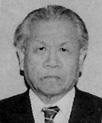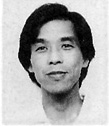
December 2004
Remembering FLEAT II
Southeast Asia Outreach
Fewer Int'l Scholars at U.S. Colleges
2004 Retrospective
![]()
/ Index /
/ Letters /
/ Profiles /
/ Search /
![]()
Subscribe
for free!

Technology Enabling Language Learning
Poignant Recollections Sparked by News of FLEAT V
The conference theme at KATESOL 2005 in Emporia, Kansas,
February 18-19, is "Language Learning in the Digital Age." Two
of our keynote speakers are: Greg Kessler, of Ohio University's
Program of Intensive English, immediate past chair of TESOL-CALL
and long-time organizer of CALL related showcases at the annual
TESOL Conventions; and Dr. Paul Miller, of Ohio State University's
Secondary Education Program, whose main interests are the
use of technology in second language instruction, and project-based
instruction.
I see our winter KATESOL meeting as a perfect warm-up for
this summer's FLEAT V conference, to be hosted by Brigham Young University the week
of August 5-10, 2005. The FLEAT acronym stands for "Foreign
Language Education and Technology," and the first FLEAT event
was held August 18-21, 1981, in Tokyo, Japan. The concept of a joint Japanese-American international conference on the scale of FLEAT was the result of meetings between the late Professor Sutesaburo Kohmoto, then Dean of the Graduate School of English Studies at Meigi Gakuin University and an officer in the Language Laboratory Association of Japan (LLA), and Mr. Sam Burggraaf, of Brigham Young University, at that time the Executive Director of the National Association of Language Laboratory Directors (NALLD).
As I look back at that experience, I realize that Dr. Niwa played a pivotal role in reviving FLEAT and reestablishing this event as the most important regular gathering of language learning technology researchers and teachers from around the globe.
To be part of the team that supported Dr. Niwa's vision that year at Chubu was a once in a lifetime opportunity for me. Those were the days when HyperCard was the most popular new software program, at least for Macintosh users. I was brought up to speed quickly by Masatoshi Sugiura, then a professor at Chubu's Women's Junior College, just up the road. About the same time, Shuji Ozeki came to Chubu University, and, between them, those two individuals arranged, set up and did troubleshooting for all the software at FLEAT II.
I had special relationships with so many colleagues at Chubu University during the two years I stayed there, from 1990 to 1992, waiting until FLEAT II was done before I left to continue my academic career in the United States. Tadashi Shiozawa was a fellow faculty member in the Modern Language Department and lived in the next building over from mine. He and I had completed our M.A.'s in TESL at about the same time, he with H. Douglas Brown at the University of Illinois, and me with Michael MT Henderson, O. Dean Gregory, Edward Erazmus and George Hughes at the University of Kansas. Tadashi and I were co-founders of the "Language Teaching Study Group" at Chubu, where Japanese and American faculty met monthly to present and critique new language teaching models, approaches, and methods. It was natural that the two of us were also involved in supporting the work of the FLEAT II Committee, and that we collaborated on a session about a more "user-friendly" English test for Japanese students we were developing together with Hiromi Imamura, a fellow faculty member, and the late Takeshi Ohba, then the media engineer in the Language Center at Chubu University.
All of the Japanese individuals I have named above
in relation to my Chubu experience I am honored to call my friends. Certainly Dr. Niwa was more of a mentor than a friend, and I am eternally grateful for the strong support he gave me from the moment I arrived at Chubu. I remember "coaching" him on how to build HyperCard stacks, and what an enthusiastic learner he was. Also, I had the pleasure of reading the manuscript for a book he wrote in English about the history of certain prepositions in the English language. As I read that material, I realized that Dr. Niwa knew my language better than I knew it myself. I also remember the strong encouragement he gave me on my research in the use of conversational logic and conversation flowcharts for English language instruction.
My first allegiance at Chubu was to the Ohio Program for
English Language Teaching (OPELT), which was in its first
formative years at that time, under the leadership of David Hopkins,
OPELT Director. One of our program's primary missions was
to work collaboratively with our Japanese counterparts on
projects to enhance English language instruction throughout
the School of International Studies at Chubu. At one end,
there was Dave encouraging new ideas, initiatives, "out-of-the-box"
thinking, and at the other end were some very key Chubu
faculty members who shared many of our goals. But project
after project required resources, technical assistance and
sincere support from the Language Center, at a policy level
from Dr. Niwa and at a practical level, on the ground, with
Takeshi Ohba.
There were literally dozens of days when he and I saw
the sun set out the Language Center windows as we
edited tape of my students doing different projects
in Chubu's state-of-the-art recording/video studio.
I had any number of technology challenges which
Takeshi Ohba took the time and interest necessary
to help me solve. While everyone else seemed to
know the software side of language learning
technology, he was the go-to person for a variety
of hardware issues, and oversaw all the technology
set-ups for FLEAT II. Takeshi was an enabler, and
a patient, friendly, constructive co-worker.
A day or two before I left Japan to return to America,
he invited me to stay overnight at his home in a
nearby town. It was such an honor to meet his family. We all
used a dictionary and our senses of humor to
communicate our good intentions. I can never
forget the joy of laughing together with the
Ohba family during my short visit with them.
In August, 2001, Takeshi Ohba died of
cancer. The news was conveyed to me
by our mutual friend, Tadashi Shiozawa,
who still teaches at Chubu. As I look forward
to the KATESOL event this winter, and possibly
making the trip to Brigham Young for FLEAT V
next August, I am saddened to realize again that
Takeshi Ohba is no longer among us. In honor
of his memory and his life, I want to push myself
to always give the necessary time and energy
to those crucial projects which make all the
difference in the world.
Article by Robb Scott
2004 ESL MiniConference Online
 A decade later, thanks to the tireless efforts of Dr. Yoshinobu Niwa, then Director of the Language Center at Chubu University, Kasugai, Japan, as well as President of the LLA, and Dr. LeeAnn Stone, then Language Lab Director at U.C.-Irvine and President of the International Association for Learning Laboratories (IALL), preparations began for FLEAT II, a year-long process which I was fortunate enough to be involved in, as a member of the FLEAT II Publications Committee, editor of the FLEAT II Program Book, English-language go-between with many contacts abroad, and co-presenter of several sessions at FLEAT II, hosted by Chubu University and the Nagoya International Center, August 4-7, 1992.
A decade later, thanks to the tireless efforts of Dr. Yoshinobu Niwa, then Director of the Language Center at Chubu University, Kasugai, Japan, as well as President of the LLA, and Dr. LeeAnn Stone, then Language Lab Director at U.C.-Irvine and President of the International Association for Learning Laboratories (IALL), preparations began for FLEAT II, a year-long process which I was fortunate enough to be involved in, as a member of the FLEAT II Publications Committee, editor of the FLEAT II Program Book, English-language go-between with many contacts abroad, and co-presenter of several sessions at FLEAT II, hosted by Chubu University and the Nagoya International Center, August 4-7, 1992.
 But perhaps the one person at Chubu University I worked most closely with on a continual basis was Takeshi Ohba, the media engineer in the Language Center. He was a Chubu graduate in engineering, and was about my age. Although he did not speak perfectly fluent English and it was not part of his job description, Takeshi made a sincere effort to move our communication forward by using English.
But perhaps the one person at Chubu University I worked most closely with on a continual basis was Takeshi Ohba, the media engineer in the Language Center. He was a Chubu graduate in engineering, and was about my age. Although he did not speak perfectly fluent English and it was not part of his job description, Takeshi made a sincere effort to move our communication forward by using English.
Robb@ESLminiconf.net